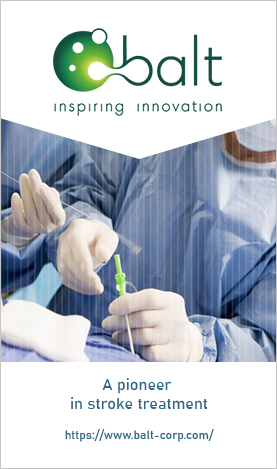Clinical and Radiological Approach to the Diagnosis of Branch Atheromatous Disease: Case Report and Review of Literature
DOI:
https://doi.org/10.32896/cvns.v7n1.11-18Keywords:
Branch atheromatous disease, Stroke, ImagingAbstract
Branch atheromatous disease (BAD) is a subtype of ischemic stroke caused by stenosis or occlusion at the entrance of the penetrating branch due to the presence of plaque. Despite its clinical importance, this concept is understudied and not commonly used in clinical and research settings. BAD is highly associated with high early neurological deterioration (END) and disability. There are several characteristics of BAD based on clinical condition, risk factors, laboratory results, and most importantly, radiographic features of infarct and blood vessels morphologies, also associated features. Early diagnosis of BAD is critical for determining treatment decisions and the prognosis of individual patients.
References
Duan H, Yun HJ, Geng X, Ding Y. Branch atheromatous disease and treatment. Brain Circulation. 2022 Oct 1;8(4):169-71.
Petrone L, Nannoni S, Del Bene A, Palumbo V, Inzitari D. Branch atheromatous disease: a clinically meaningful, yet unproven concept. Cerebrovascular Diseases. 2016 Dec 16;41(1-2):87-95.
Yamamoto Y, Ohara T, Hamanaka M, Hosomi A, Tamura A, Akiguchi I. Characteristics of intracranial branch atheromatous disease and its association with progressive motor deficits. Journal of the neurological sciences. 2011 May 15;304(1-2):78-82.
Chung JW, Kim BJ, Sohn CH, Yoon BW, Lee SH. Branch atheromatous plaque: a major cause of lacunar infarction (high-resolution MRI study). Cerebrovascular diseases extra. 2012 Mar 1;2(1):36-44.
Uchiyama S, Toyoda K, Kitagawa K, Okada Y, Ameriso S, Mundl H, Berkowitz S, Yamada T, Liu YY, Hart RG, NAVIGATE ESUS Investigators. Branch atheromatous disease diagnosed as embolic stroke of undetermined source: a sub-analysis of NAVIGATE ESUS. International Journal of Stroke. 2019 Dec;14(9):915-22.
Li S, Ni J, Fan X, Yao M, Feng F, Li D, Qu J, Zhu Y, Zhou L, Peng B. Study protocol of Branch Atheromatous Disease-related stroke (BAD-study): a multicenter prospective cohort study. BMC neurology. 2022 Dec 9;22(1):458.
Takahashi S, Kokudai Y, Kurokawa S, Kasai H, Kinno R, Inoue Y, Ezure H, Moriyama H, Ono K, Otsuka N, Baba Y. Prognostic evaluation of branch atheromatous disease in the pons using carotid artery ultrasonography. Journal of Stroke and Cerebrovascular Diseases. 2020 Jul 1;29(7):104852.
Zhou L, Yao M, Peng B, Zhu Y, Ni J, Cui L. Atherosclerosis might be responsible for branch artery disease: evidence from white matter hyperintensity burden in acute isolated pontine infarction. Frontiers in Neurology. 2018 Oct 9;9:840.
Nagasawa J, Suzuki K, Hanashiro S, Yanagihashi M, Hirayama T, Hori M, Kano O. Association between middle cerebral artery morphology and branch atheromatous disease. The Journal of Medical Investigation. 2023;70(3.4):411-4.
Deguchi I, Takahashi S. Pathophysiology and optimal treatment of intracranial branch atheromatous disease. Journal of Atherosclerosis and Thrombosis. 2023 Jul 1;30(7):701-9.
Ha SH, Ryu JC, Bae JH, Koo S, Chang JY, Kang DW, Kwon SU, Kim JS, Chang DI, Kim BJ. Factors associated with two different stroke mechanisms in perforator infarctions regarding the shape of arteries. Scientific Reports. 2022 Oct 6;12(1):16752.
Published
How to Cite
Issue
Section
License

This work is licensed under a Creative Commons Attribution-ShareAlike 4.0 International License.






